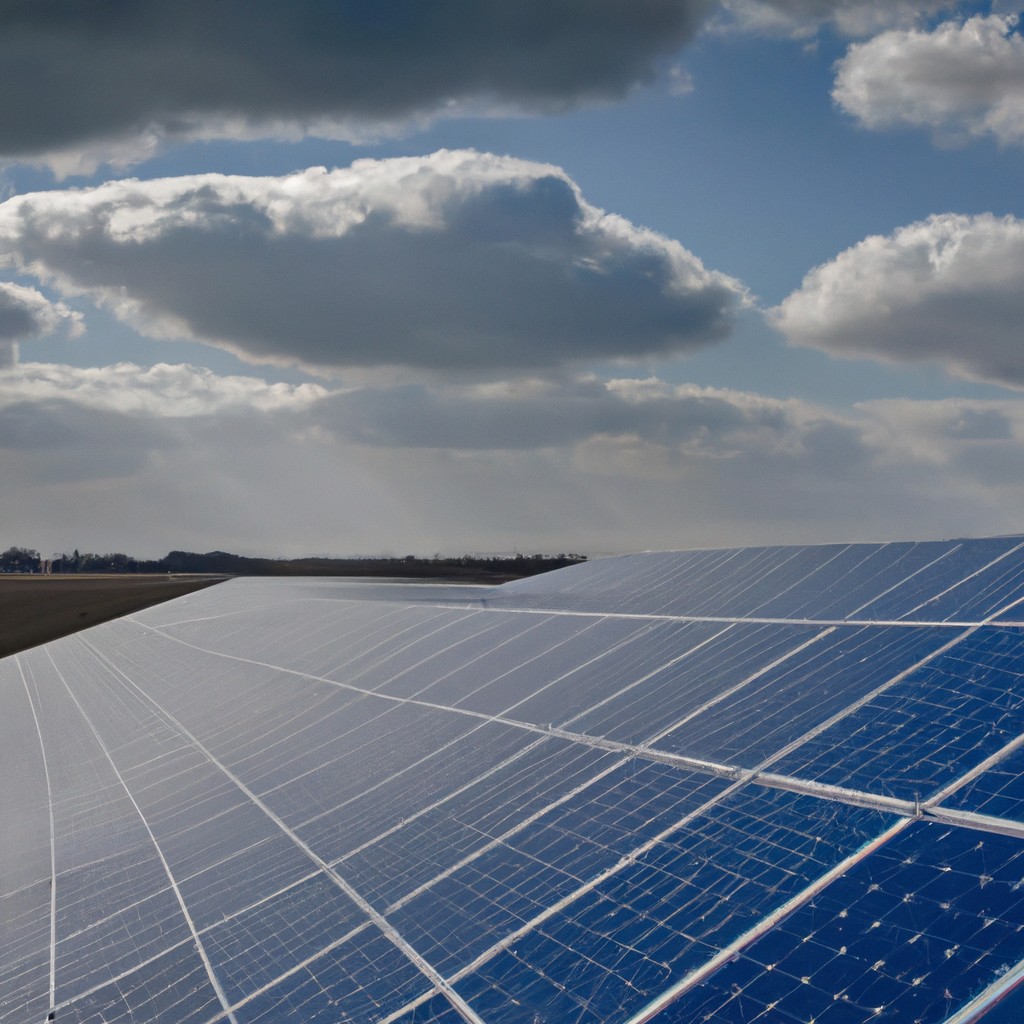This article provides a comprehensive understanding of solar farms, detailing how they operate, their benefits, and their role in renewable energy production.
Key takeaways:
- Solar farms are large-scale installations of solar panels that convert sunlight into electricity.
- Types of solar farms include utility-scale, community solar gardens, concentrated solar power, floating solar farms, and agrivoltaics.
- Solar farms offer advantages such as reduced greenhouse gas emissions, stable energy source, and job creation, but also have challenges like land use and variable energy production.
- The cost of building a solar farm depends on factors such as land, solar panels, economies of scale, installation, permitting, and incentives.
- The construction process for a solar farm involves site selection, environmental assessment, land preparation, infrastructure and mounting system installation, solar panel installation, wiring and electrical systems, grid connection, and testing and commissioning.
What Is a Solar Farm?

A solar farm, also known as a photovoltaic power station, is a large-scale installation of solar panels designed to capture sunlight and convert it into electricity. These installations typically spread over acres of land and operate as power plants, contributing significant amounts of clean energy to the grid.
Key components include solar panels or modules, inverters to convert the generated direct current (DC) into alternating current (AC), and often tracking systems to optimize solar exposure. The generated power is then transmitted via substations and distribution lines for public or commercial use.
Solar farms can be found in various settings, from rural areas to deserts, and are pivotal in the drive for sustainable energy solutions as they capitalize on renewable solar energy without emitting greenhouse gases during operation.
Types of Solar Farms
Solar farms come in various sizes and configurations, each suited to different settings and energy needs.
1. Utility-Scale Solar Farms: These are extensive operations, often spanning hundreds of acres, designed to generate electricity on a large scale. Typically, utility-scale solar farms have a capacity of 1 megawatt (MW) or more and are connected to the power grid, supplying energy to multiple consumers.
2. Community Solar Gardens: These are smaller-scale projects that enable multiple parties to benefit from a single, shared solar array. Community members can subscribe or buy into the farm and receive credit on their electricity bills for the power generated.
3. Concentrated Solar Power (CSP): Instead of photovoltaic (PV) panels, CSP systems use mirrors or lenses to concentrate sunlight onto a small area to produce heat, which then generates electricity usually through steam turbines.
4. Floating Solar Farms: Also known as floatovoltaics, these installations are mounted on buoyant structures in bodies of water, such as reservoirs or lakes. Floating solar farms help to conserve water through reduced evaporation while generating clean energy.
5. Agrivoltaics: This innovative approach co-locates agriculture and solar panels, allowing for dual land use. The solar panels provide shade, which can enhance agricultural productivity in certain climates, while the crops or vegetation can keep the solar panels cooler, increasing their efficiency.
Each type has its distinct setup and uses, determined by factors such as land availability, climate, investment size, and intended energy output.
Advantages and Disadvantages of Solar Farms
Solar farms harness clean, renewable energy from the sun, significantly reducing greenhouse gas emissions compared to fossil fuel energy sources, which mitigates climate change impact. They also offer a stable, price-predictable energy source, protecting against the volatility of traditional energy markets.
On the land-use front, solar farms can coexist with agriculture, through agrivoltaics—combining solar energy production with crop cultivation. Additionally, once operational, solar farms require minimal maintenance compared to conventional power plants and create local jobs for installation and upkeep.
However, solar farms require large land areas, which can lead to habitat disruption if not properly sited. The initial investment is substantial, potentially posing financial challenges. Solar energy production is also variable, being weather-dependent and confined to daylight hours, necessitating storage solutions or supplemental power sources to ensure a continuous supply. Lastly, some communities express concerns about aesthetic changes to landscapes and potential declines in property values.
Cost of Building a Solar Farm
The initial expenditure for constructing a solar farm can be significant, influenced by factors such as location, scale, and technology. Here are key points to consider:
- Land Costs: Prices vary dramatically based on geography. Leasing land can be an alternative to reduce upfront expenses.
- Solar Panels: A major cost component, with prices dependent on capacity and panel efficiency.
- Economies of Scale: Larger projects typically benefit from lower costs per megawatt.
- Installation: Labor and the complexity of the electrical system can impact costs considerably.
- Permitting and Connection: Fees for legal permits and grid connection can contribute a small but significant percentage.
- Incentives: Tax credits, rebates, and renewable energy certificates can offset a portion of the investment.
Over time, operational costs tend to be low, and the predictable nature of these expenses means investors can project long-term yield with reasonable confidence.
Building Process for a Solar Farm
The construction of a solar farm follows a methodical process after preliminary planning and acquiring necessary permits:
1. Site Selection: A suitable location with ample sunlight exposure and minimal shading is identified.
2. Environmental Assessment: Studies are conducted to mitigate any potential ecological impacts.
3. Land Preparation: Terrain is cleared and leveled if necessary to optimize solar exposure.
4. Infrastructure Development: Access roads and support buildings are constructed.
5. Mounting System Installation: Structures that hold solar panels are set up, considering optimal tilt and orientation for sunlight absorption.
6. Solar Panel Installation: Photovoltaic panels are securely installed onto the mounting structures.
7. Wiring and Electrical Systems: Panels are connected through wiring, and inverters are installed to convert direct current to alternating current.
8. Grid Connection: The farm is linked to the electrical grid with appropriate safety and metering devices.
9. Testing and Commissioning: The entire system is rigorously tested to ensure operational safety and efficiency before full-scale operation.
Throughout each step, specialists ensure adherence to engineering specifications, safety standards, and regulatory compliance.




